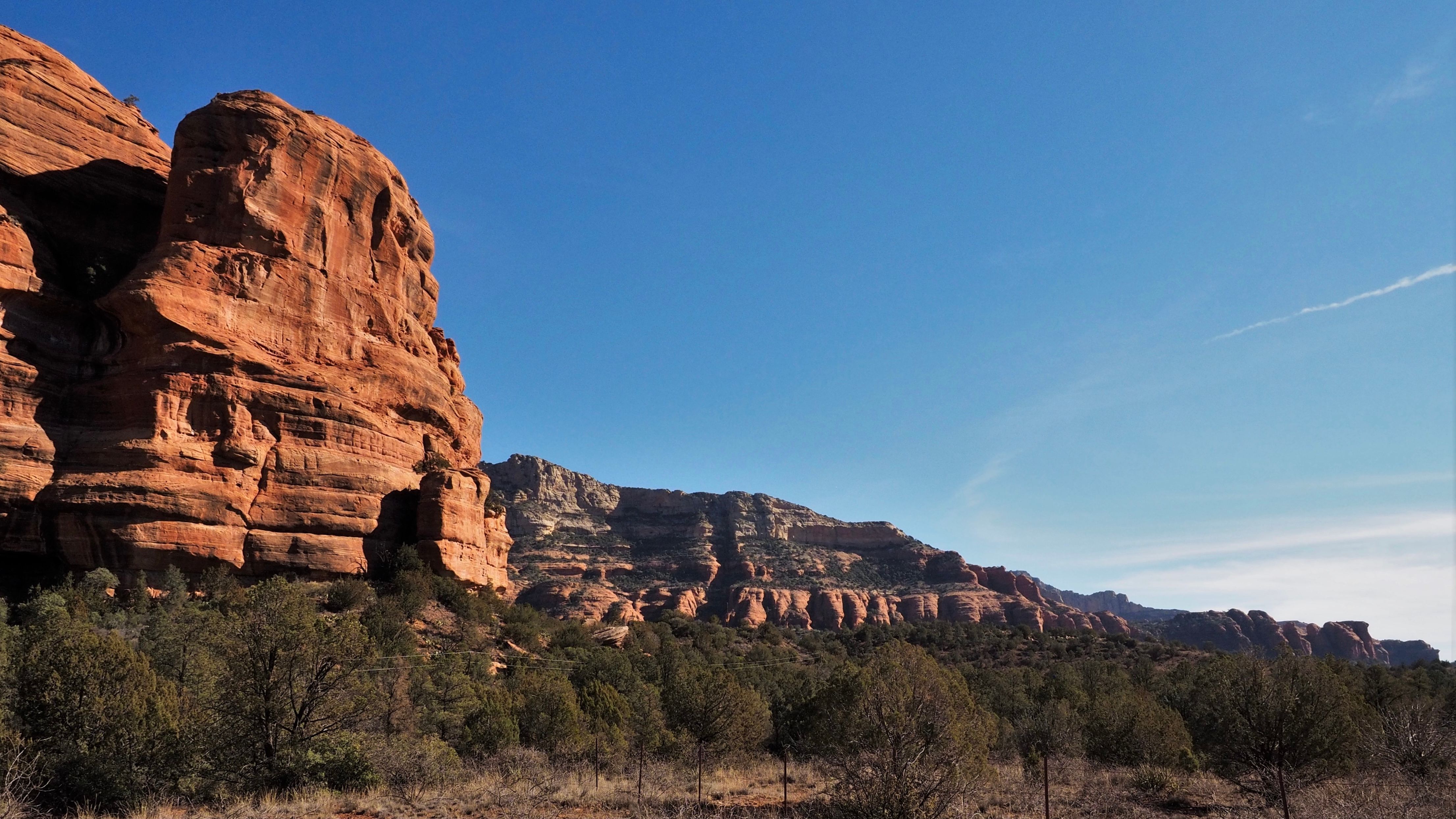The historic Honanki Indian Ruins in Arizona

(ARIZONA) The American history is no more than 250 years old, but the land we stand on has millions and millions of years of history. Paleo-Indians migrated from Siberia to North America at least 12,000 years ago. Nowadays we still can find the early day human ruin sites in Arizona and other states.
One of the most satisfying things to do in Sedona, Arizona is to visit the Indian ruins. There have been people living in the Verde Valley for thousands of years, but until relatively recently they have remained hunters/gatherers. These early nomadic people harvested various plants when in season, and thought the area to be the best shopping market around.
Honanki is a nearby city of Sedona, and is one of the finest examples of Southern Sinagua architecture in the American Southwest. The Southern Sinagua constructed sophisticated dwellings of towering stone walls held together with a mixture of water and mud. You can see the handprints, still visible, of those who built this structure.
Portions of the structure were two-story high and topped with parapet walls. This site had more than 70 rooms. At least one community room was discovered which suggested a complex religious and social lifestyle. Imagine as many as 200 people were living here 800 years ago, between A.D.1050 and 1350, they hunted in the Verde Valley and grew corn, squashes, beans and cotton. They left us an intriguing legacy of ruins, pottery and rock art.
Where did they come from? Archaeologists believed that as early as 8000 B.C., archaic people hunted animals and gathered plants in the region. Around A.D.600, those local residents, perhaps joined by immigrants from surrounding areas, adopted a way of life that archaeologists identified as the Sinagua.
Where did they go? Most Sinagua left the Verde Valley in the early 15th century moving east and north to Hopi. Neither climate change nor warfare could adequately explain why the Sinagua would leave the region. The Hopi people believed that the sites like Honanki could document a predestined, sacred migration that ultimately ended at Hopi.
What was an artifact? An artifact was anything left behind by people who lived here, like bones, a piece of pottery or puzzle. Every artifact was an important clue to help us understand how there people lived in prehistoric times.
Honanki is 21 miles west of Sedona, open 7 days a week from 9:30am to 5pm. It is closed on Thanksgiving and Christmas Day. Red Rock Pass is required, but the passes are not sold there. Red Rock District 925-203-2900.
Coordinates N34* 56’19.032” W111*55’59.9874”
- In a 52-2 vote, Chinese American Democratic Club endorses to recall Supervisor Engardio as a result of passage of Proposition K
- An amnesty program in San Francisco is back through July 1, 2025 to legalize existing awnings
- Opinion: Political betrayal warrants recall
- Do empty yellow loading zones best serve the San Francisco Chinatown community?
- T&T Supermarket, largest Asian grocery chain in Canada, announces to open at San Francisco City Center on Geary Blvd. in winter 2026
- (Breaking news: Charlene Wang wins in the Oakland's special election) Charlene Wang runs for Oakland District 2 Councilmember on April 15, 2025 to represent Oakland Chinatown
- Mayor Lurie announces plans to support small businesses including First Year Free program waiving fees for new businesses
- 12 speed safety camera systems out of 33 begin to operate in San Francisco by first issuing warnings instead of citations for 60 days






